by Ludwig Pesch
Carnatic music – the classical music of South India – unites people from a variety of social backgrounds. Over two hundred fifty million people now inhabit a region that comprises five modern states (Andhra Pradesh, Karnataka, Kerala, Tamil Nadu, and Telangana) drawn up on the basis of their respective linguistic majorities. They take pride in regional cultural traditions and festivities in addition to those celebrated all over the country.1
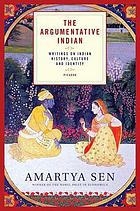
So it hardly surprises that this music has long attracted creative minds from other regions of India; and since the mid-20th century western scholars and performers have marvelled at its capacity for connecting people by overcoming cultural, linguistic, political just as religious divides. Most importantly, all of this often happens in enjoyable, seemingly effortless ways even as “outsiders” have struggled to comprehend the underlying principles or the causes of political strife.2
Not so long ago each manifestation of Indian music was understood to be firmly rooted in a specific context, rarely if ever allowed to transcend “natural”, “sacred” or “social” barriers; in the words of Nazir Jairazbhoy:
Classical music is the most refined and sophisticated music to be found in the subcontinent of India. There are many other forms, however, which have a specific function in the society, and these are by no means devoid of artistic expression. The great diversity of music in India is a direct manifestation of the diversity and fragmentation of the population in terms of race, religion, language, and other aspects of culture. The process of acculturation, so accelerated in modern times, is still not a very significant factor in many areas of the country.3
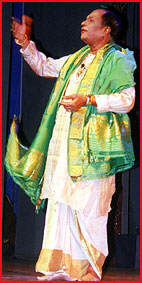
Image © Kutcherbuzz.com >>
Even if matters have changed considerably since the advent of the internet, the resilience of Carnatic music seems firmly rooted in local history and mythology just as in the lyrics of composers, or in the styles represented by performers and choreographers of national standing. At the same time, they often stand united by their yearning for “unity“: an identification with something greater than one’s “mortal self”.
As a case in point, we may consider the undiminished popularity of songs written by Sri Tyagaraja (1767-1847) expressing the conviction that “immersion in music” is a potent remedy against bigotry, hypocrisy, self-deception and vanity.4
In this regard it seems as if he anticipated the quest for truthfulness (Satyagraha)5 as expounded by Gandhi, to start with as precondition to peaceful advancement for all of humanity.
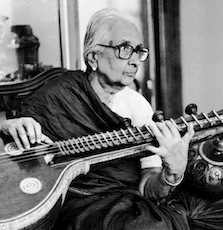
According to Savithri Rajan, this goes beyond a personal fight against self-delusion or structural discrimination of (religious) minorities and instead, amounts to a lifelong quest for a sound understanding of “reality” (be it in utilitarian terms such as general welfare or personal fulfillment):
Savithri Rajan believes that Tyagaraja, like these other great men, was always meditating, but his medium of expression was nādam, “sound” – he was an aspirant who followed nādopāsana, the approach or worship by way of sound. She points out that Tyagaraja composed a song beginning with the word nādopāsana saying there is nothing higher than worship via sound, music is the best vehicle because Brahman is nādam – divine sound – which is the omnipresent, omniscient power, “call it Power with a capital ‘P’, call it God, call it Christ, call it Krsna, call it Rāma.”
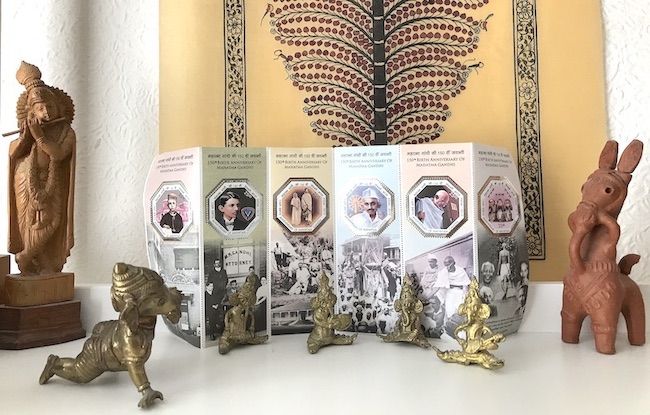
Photo © Ludwig Pesch
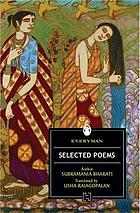
Search this book in libraries near you:
Worldcat.org >>
Needless to mention that several others have followed in the great composer’s footsteps in a variety of ways and for different reasons, even for causes like India’s independence from colonial rule at a time when this was a dangerous proposition.6 They emulated proven models from different epochs and regions including “folk” music, be it consciously or otherwise. Thanks to the widespread appeal of drama, and the emergence of film as soon as sound technology permitted, several Carnatic musicians and composers crossed into new domains beyond “classical” music (here understood as following, even transcending time proven conventions, local tastes and appreciated by generation after generation).
Such issues are readily addressed in practices akin to “mindfulness”, as one would now describe a remedy that’s freely available to all, young and young at heart. Some are compelled by an irrepressible moral compass that helps them to promote causes including social justice that leaves no room to “untouchability” and other forms of (caste-related) discrimination.

The infinite scope for creativity inherent in this tradition, including self-expression and – most relevant for modern societies the world over – lifelong learning, has ensured that Carnatic musicians has endured; and this even in the face of unprecedented pressures such as those currently debated by way of social media, book writing and commentaries in Indian press.
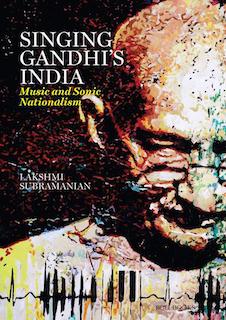
Worldcat.org >>
Most interestingly some of these issues echo the ideals of India’s founding fathers just as those of their peers, as part of global peace and ecological movements (both inspired by Mahatma Gandhi);7 most notably so in the legacy Rabindranath Tagore bequeathed to many spheres of the arts and sciences that continues to reverberate in our time;8 and Maria Montessori,9 the great educationist he admired for insights that were to took roots in Indian music and dance, notably at Kalakshetra, an institution of national importance founded by Rukmini Devi.
Very often I think and feel that I am like a flute – the flute that cannot talk but when the breath is upon it, can sing. – Rabindranath Tagore whose pioneering institution Santiniketan inspired Kalakshetra
The beauty and depth of Carnatic music became indispensable in the newly emerging practice of an ancient branch of dance, today regarded as an integral part of India’s cultural heritage; and accordingly referred to as Bharata Natyam when merging with India’s mainstream culture (from the first half of the 20th century onwards) rather than continuing as the heirloom of a particular “community”.10 As a result, all the strands are united as envisaged in distant antiquity, in the Natya Shastra, a treatise on drama or “total theatre”, ascribed to the legendary sage Bharata and further elucidated in several commentaries and other works on similar lines.11
In short, what should matter most to us today is an open invitation long extended by some of the most talented exponents of this music in and outside India: not merely to appreciate but actively participate in it – all this in a spirit of mutual respect in the face of outward differences, driven by our shared love for lifelong learning; some equally inclined towards critical inquiry (as suggested by many of its poet-composers throughout the ages). So without exaggeration this is all about a music whose exponents have long welcomed new discoveries. And in the meantime, even the “brilliant Semmangudi Srinivasa Iyer, who was himself deeply religious, clarified that bhakti is essential for a Carnatic music, but this bhakti is for music, not for any personal deity”.12
Information about the persons, items or topics
Research & Custom search engines
The Oxford Illustrated Companion to South Indian Classical Music
Learn & practice more
A brief introduction to Carnatic music (with music examples and interactive map)
Bhava and Rasa explained by V. Premalatha
Free “flow” exercises on this website
Introduction (values in the light of modernity)
Video | Keeping tala with hand gestures: Adi (8 beats) & Misra chapu (7 beats)
Why Carnatic Music Matters More Than Ever
Worldcat.org book and journal search (including Open Access)
- Since Independence, these states are known as Andhra Pradesh, Karnataka, Kerala, Tamil Nadu, and Telangana; see Wikipedia:
South India, also known as Peninsular India, consists of the peninsular southern part of India. It encompasses the Indian states of Andhra Pradesh, Karnataka, Kerala, Tamil Nadu, and Telangana, as well as the union territories of the Andaman and Nicobar Islands, Lakshadweep and Puducherry, comprising 19.31% of India’s area (635,780 km2 or 245,480 sq mi) and 20% of India’s population. Covering the southern part of the peninsular Deccan Plateau, South India is bounded by the Bay of Bengal in the east, the Arabian Sea in the west and the Indian Ocean in the south. The geography of the region is diverse with two mountain ranges – the Western and Eastern Ghats – bordering the plateau heartland. The Godavari, Krishna, Kaveri, Tungabhadra, Periyar, Bharathappuzha, Pamba, Thamirabarani, Palar, and Vaigai rivers are important perennial rivers.
The majority of the people in South India speak at least one of the four major Dravidian languages: Telugu, Tamil, Kannada and Malayalam (all 4 of which are among the 6 Classical Languages of India). [↩]
- Nobel Awardee Amartya Sen discusses some these issues in his ground-breaking book The Argumentative Indian: Writings on Indian History, Culture and Identity, “suggesting the ways we must understand India today in the light of its rich, long argumentative tradition [while] appreciating not only the richness of India’s diversity but its need for toleration“. [↩]
- “Tribal, Folk and Devotional Music” by Nazir Jairazbhoy in AL Basham (ed.). A Cultural History of India. London: Oxford University Press, 1975, pp. 234-237. Excerpt from Chapter XVI Music (pp. 212-242 [↩]
- In Manasu svadhinamaina, Tyagaraja questions the meaning of penances (tapas) when control over one’s mind is all that really matters; and in Intakannaanandam emi he shares his experience of the sprawling universe that loses its diversity in the process of singing and dancing with abandon: “Can there be any Bliss greater than merging heart and soul?”
Sri Tyagaraja’s search for a greater, universal meaning culminates in Paramatmudu by asserting that a Supreme Being is present “in all that’s made of sky, wind, fire, and water, in beasts and birds and hills and trees by the tens of millions, always in the lifeless and the lively”; an all-embracing – indeed humbling – view of the role human beings play in a larger scheme. Sources: The Spiritual Heritage of Tyagaraja translated by C. Ramanujachari with an Introductory Thesis by V. Raghavan (Madras: Sri Ramakrishna Math 1981), karnatik.com and William J. Jackson in Tyagaraja: Life and Lyrics. [↩]
- “Satyagraha is literally holding on to Truth and it means, therefore, Truth-force. Truth is soul or spirit. It is, therefore, known as soul force. It excludes the use of violence because man is not capable of knowing the absolute truth and, therefore, not competent to punish. […] Non-cooperation, too, like Civil Disobedience is a branch of Satyagraha, which includes all non-violent resistance for the vindication of Truth.” – Mohandas K. Gandhi in Young India, 23 March 1921; p. 90 [↩]
- Most notably, the lyrics of Subramania Bharati come to mind in the context of South Indian musicians eager to express their love of freedom; an ideal that cannot be realized in the absence of solidarity with those yet to benefit from proper education and health care, the basic preconditions for becoming free citizens of a modern country: “If the younger brother is frail, will the elder enslave him? Will the might of money and muscle frighten us into becoming slaves? Beat the drum! Let it be known that in love lies our deliverance.” Beat the drum translated by Usha Rajagopalan in Selected Poems: Subramania Bharati, Everyman/Hachette 2012, p. 51. [↩]
- “It is Gandhi’s profound religious belief and sensibility that made him resolutely secular; his secularism, and his worldly obligations, each of which was but an attempt to strive for self-realization, deepened his religious belief. His veneration for other faiths made him more, not less, of a Hindu. The advocates of a militant and muscular Hindu nationalism are in this matter entirely clueless—scarcely surprising given their ferocious disdain for self-reflexivity or anything that may remotely be called thought.” – Prof. Vinay Lal in Gandhi’s Secularism in the Age of Muscular Hinduism” [↩]
- including his “zealous devotion to the ideal of a casteless world, a world without cruel, irrational discrimination between one human being and his fellow men” according to the Director-General of Unesco on the occasion of the Tagore Centenary celebrations in 1961 [↩]
- “We also see her strong commitment to bringing progress and fighting illiteracy in India, which grew into an enduring love for the country and its people. Montessori’s colourful descriptions of her journey and life in India, her worries about her grandchildren in war-torn Europe, and her son’s imprisonment make a fascinating read.” – Maria Montessori Writes to Her Grandchildren published by Association Montessori Internationale Montessori (Amsterdam: 2021 [↩]
- “If dance and music were so integral to the system that so oppressed a woman, they must be halted too, so that new art could emerge.” – “The Devadasi Question” by V.R. Devika in Muthulakshmi Reddy – A Trailblazer in Surgery and Women’s Rights [↩]
- Search for the writings of Tanjore Balasaraswathi, Kapila Vatsyayan and Ananda Coomaraswamy for different perspectives, in addition to those of Rukmini Devi and Muthulakshmi Reddy; and academic papers authored/edited by Davesh Soneji. [↩]
- Lakshmi Sreeram in “Carnatic Music Ruminating the Landscape”, Indian Horizons published by The Indian Council for Cultural Relations; it is worth mentioning here that the most prominent musician-activist of our time, TM Krishna, has gratefully acknowledged his indebtedness to “Semmangudi” in interviews. [↩]
